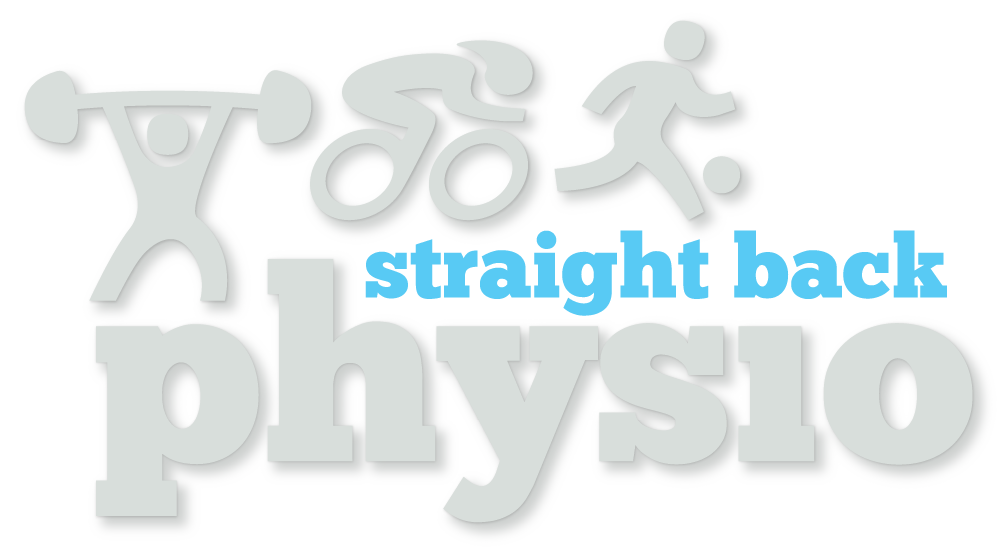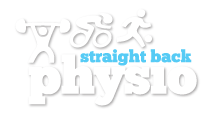physiotherapy for Back pain in Cheltenham
Let's face it, our backs have a fundamental fault, they are not designed to stand up to the stresses and strains placed on them by humans walking upright. This means that back pain, particularly lower back pain, is very common.
Most back problems often start for no obvious reason, which can be very frustrating, and statistics show that around 80% of people will suffer back pain at some point in their lives with around a 50% chance of recurrence.
Back pain will usually improve within 6 weeks, but it can sometimes last longer or keep coming back. If the pain is severe, or disrupting your daily activities, then it is often advisable to get it looked at by a professional.

Diagnosis is key to an effective treatment
Back pain is common and the older you get the more likely you are to experience it, in fact it is the number one cause of early retirement.
The most important thing about back pain is to determine what structure is causing most of your symptoms. There is a big difference between how we will treat a herniated disc vs. a strained lower back muscle.
A physical examination is usually all that is needed to diagnose the source of your back pain. Once we know the reason for your back pain we are halfway to treating it.
Personalised Treatment
One of the big advantages of physiotherapy is its personalized nature, before commencing any treatment we will give you a thorough assessment to see if you have a serious health problem that may be connected to your back pain. We will ask you a series of questions about the problem area and your general health, we will then follow up with a physical check of your movement to locate the cause of your back pain and propose a recovery plan to both treat and help prevent further problems.
Gradual Progression
Physiotherapy treatment plans are designed to progress gradually by considering the patient’s tolerance and response to the therapy. Our therapists will guide you step-by-step, ensuring that you are ready to advance to the next level before introducing any more challenging exercises or techniques. This gradual progression helps prevent excessive pain or discomfort and promotes a positive experience throughout your recovery.
Avoid the Need for Surgery
Where there has been physical damage we aim to avoid the upheaval of surgery by using a range of non-invasive techniques which target the cause of your back pain. Our expert physiotherapy team are here to provide you with the best treatment and to help you achieve a swift recovery.

“Thanks to Straight Back Physio my back pain has eased considerably. They diagnosed my condition, explained it so I could understand what was going on and with massage, acupuncture and exercises helped me recover within a few months. I would absolutely recommend them to anyone with a back problem.”
Becky, Google review
Why your lower back may hurt
Lower back ache while standing or walking, is often a symptom of muscle fatigue or poor posture. You can usually treat this pain at home with rest, OTC pain relief. Persistent or recurring lower back pain may indicate an underlying condition.
Four out of five people experience lower back pain at some point in their lives. It’s one of the leading reasons why people see their doctors.

- Strains and sprains. These occur when muscle fibres stretch or tear such as by lifting something that’s too heavy, or by lifting it wrong. But also by sneezing, coughing, twisting, or bending over. A strain is an injury to a muscle or tendon whilst a sprain is an injury to a ligament. Mild injuries heal in 1-2 weeks by rest, ice, compression and elevation (RICE), physiotherapy helps moderate injuries heal in 2-6 weeks, but severe injuries may take several months.
- Herniated Disc.
Discs cushion the small spinal bones or vertebrae. Spinal discs can bulge or tear from their position in the spine and press on a nerve, causing significant pain. As you age, discs sometimes flatten and offer less cushion. An exercise or physiotherapy program is best done as a controlled, gradual, and progressive series of exercises. The average time it takes a herniated disc to heal is 4-6 weeks, but depending on the severity, and where it occurred, it could get better anything from a few days to several months.
- Spinal stenosis. This is a condition that occurs when the spinal column is too narrow for the spinal cord. It can result in something pinching the spinal cord, which can cause severe sciatic nerve pain and lower back pain. Physiotherapy can decrease the pain and provide the knowledge of how to correct posture, avoid positions and movements that make pain worse, and complete everyday activities in a way that avoids increased strain on the lower back.
- Arthritis. Lower back arthritis causes back pain and stiffness, and in some cases, limited range of motion. Physical therapy for arthritis may include exercises to improve joint mobility and tips on posture and movement that can help ease arthritis symptoms, reduce the need for pain medication, and even delay or avoid the need for surgery.
- Spondylolisthesis.
This condition, in which a bone or vertebrae in the spine slips out of place, usually results in back or leg pain. Physiotherapy, including massage, followed by a rehabilitation exercise program, is needed to improve muscle balance rather than just muscle strength alone.
Why your middle back may hurt
The middle back is less likely to get injured than the lower back because it is more rigid. Pain in this region is usually caused by irritation or injury to the nerves as well as to the ligaments, muscles, and discs in the area.
- Arthritis. Lower back arthritis causes back pain and stiffness, and in some cases, limited range of motion. Physical therapy for arthritis may include exercises to improve joint mobility and tips on posture and movement that can help ease arthritis symptoms, reduce the need for pain medication, and even delay or avoid the need for surgery.
- Herniated Disc. Discs cushion the small spinal bones or vertebrae. Spinal discs can bulge or tear from their position in the spine and press on a nerve, causing significant pain. As you age, discs sometimes flatten and offer less cushion. An exercise or physiotherapy program is best done as a controlled, gradual, and progressive series of exercises. The average time it takes a herniated disc to heal is 4-6 weeks, but depending on the severity, and where it occurred, it could get better anything from a few days to several months.
- Strains and sprains. These occur when muscle fibres stretch or tear such as by lifting something that’s too heavy, or by lifting it wrong. But also by sneezing, coughing, twisting, or bending over. A strain is an injury to a muscle or tendon whilst a sprain is an injury to a ligament. Mild injuries heal in 1-2 weeks by rest, ice, compression and elevation (RICE), physiotherapy helps moderate injuries heal in 2-6 weeks, but severe injuries may take several months.
- Poor Posture. This isn’t due to laziness or apathy, its related to physical weaknesses in our bodies. Poor posture leads to excessive strain on muscles and ligaments and weakens core muscles needed to keep you upright and healthy. Physiotherapy can help people explore a range of postures and movements, enhancing their ability to adapt to different activities and environments comfortably.
- Aging. As we age natural changes occur cause wear and tear to our bodies, middle back pain is typically brought on by thinning of the bones, loss of muscle mass, and the decrease in fluids found between the joints of the spine. Aging is inevitable, but the pain associated with it does not have to be.
- Osteoporosis. This can cause the bones to weaken and increase the risk of fractures. People with osteoporosis in the back can experience severe back pain due to strains or compression fractures. Physiotherapy treatment for osteoporosis usually involves a selection of exercises tailored to your individual needs. These are designed to strengthen key muscle groups that support and stabilize areas of weakness to protect bones and improve balance which decreases the risk of falls.
Why your upper back may hurt
Pain in the upper back is less common than neck pain or lower back pain because the bones in that area of your back don't move or flex as much, their job is to protect vital organs in your body such as your heart and lungs. Before pursuing alternative, more aggressive treatments, such as back surgery, patients with the majority of upper back pain are frequently recommended for 4 weeks of physical therapy as an initial conservative treatment option.

- Poor Posture. This isn’t due to laziness or apathy, its related to physical weaknesses in our bodies. Poor posture leads to excessive strain on muscles and ligaments and weakens core muscles needed to keep you upright and healthy. Physiotherapy can help people explore a range of postures and movements, enhancing their ability to adapt to different activities and environments comfortably.
- Arthritis. Lower back arthritis causes back pain and stiffness, and in some cases, limited range of motion. Physical therapy for arthritis may include exercises to improve joint mobility and tips on posture and movement that can help ease arthritis symptoms, reduce the need for pain medication, and even delay or avoid the need for surgery.
- Herniated Disc. Discs cushion the small spinal bones or vertebrae. Spinal discs can bulge or tear from their position in the spine and press on a nerve, causing significant pain.
As you age, discs sometimes flatten and offer less of a cushion effect. An exercise or physiotherapy program is best done as a controlled, gradual, and progressive series of exercises. The average time it takes a herniated disc to heal is 4-6 weeks, but depending on the severity, and where it occurred, it could get better anything from a few days to several months.
- Strains and sprains. These occur when muscle fibres stretch or tear such as by lifting something that’s too heavy, or by lifting it wrong. A strain is an injury to a muscle or tendon whilst a sprain is an injury to a ligament. Mild injuries heal in 1-2 weeks by rest, ice, compression and elevation (RICE), physiotherapy helps moderate injuries heal in 2-6 weeks, but severe injuries may take several months.
- Whiplash.
High speed snapping of the neck causes an overstretching of the muscles, tendons, and ligaments of the joints of the neck that travel down and across the upper back. Physiotherapy is one of the most effective treatments for whiplash, in may include massage, manual manipulation, and exercises to strengthen muscles and speed up the healing process.
- Myofascial Pain.
This stems from problems in the connective tissue of the back, it usually begins after an injury of overuse, but chronic myofascial pain may last long after the initial injury. Physiotherapy may involve a combination of exercises, manual manipulation, massage, dry needling (acupuncture), and shockwave therapy.
- Fibromyalgia. This is a chronic condition characterised by widespread pain in the muscles, tendons, and ligaments of the body. Whilst there is no known cure for fibromyalgia physiotherapy may help relieve the symptoms of pain, improve energy levels, maintain or improve mobility, and reduce stiffness and fatigue.
Back pain treatment
Depending on the cause you might be able to treat it yourself with R.I.C.E. (Rest, Ice, Compression, Elevation) but if you are experiencing back pain, it is always recommended to get it checked out early.
Back pain arises from various factors, including muscle strains, ligament injuries, spine arthritis, or disc issues. Research shows the effectiveness of physiotherapy in not only reducing pain but also in improving mobility and strengthening back muscles to prevent future injuries. A physiotherapist adopts a holistic approach, addressing the pain’s root cause which includes:
- An initial assessment
- Developing a personalised treatment plan
- Ongoing sessions and home exercise programs
- Long-term management and preventative strategies

Book now
Our back pain treatment clinic in Cheltenham, Gloucestershire uses a wide range of treatments that are all recommended and tailored to help keep you pain and injury-free, we offer preventative services to maintain your well-being and enhance your activity levels.
We understand that some people may want to find out a bit more about the cost before they book an appointment at our physiotherapy clinic. Our unique save as you recover packages can save you up to 20% on the cost of a single session.
For most injuries our chartered physio can usually treat you within 4 to 8 sessions.
Insured
We can either work directly with your insurance company or we can provide receipts for patients who use cash-based plans so you can reclaim your treatment costs.
Not Insured
You can book an appointment on a self referral basis, without the need for seeing your GP first.
Why Choose Us
No other local physiotherapy clinic can offer you the same level of physiotherapy and rehabilitation that we can, simply because they don't have our level of experience and our in-house gym facilities.
This is how we gained our reputation of treating patients when other physios may have failed.
Contact Information
Quick Links
Our Location
© Copyright 2024 | All Rights Reserved | Straight Back Physio

